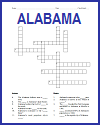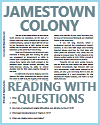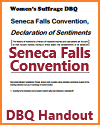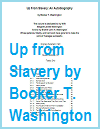Colonial Massachusetts |
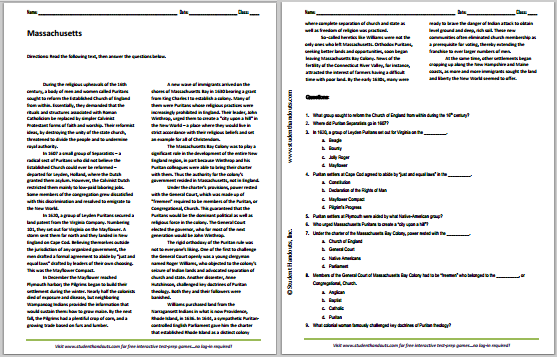 During the religious upheavals of the 16th century, a body
of men and women called Puritans sought to reform the
Established Church of England from within. Essentially, they
demanded that the rituals and structures associated with Roman
Catholicism be replaced by simpler Calvinist Protestant forms of
faith and worship. Their reformist ideas, by destroying the
unity of the state church, threatened to divide the people and
to undermine royal authority. During the religious upheavals of the 16th century, a body
of men and women called Puritans sought to reform the
Established Church of England from within. Essentially, they
demanded that the rituals and structures associated with Roman
Catholicism be replaced by simpler Calvinist Protestant forms of
faith and worship. Their reformist ideas, by destroying the
unity of the state church, threatened to divide the people and
to undermine royal authority.In 1607 a small group of Separatists – a radical sect of Puritans who did not believe the Established Church could ever be reformed – departed for Leyden, Holland, where the Dutch granted them asylum. However, the Calvinist Dutch restricted them mainly to low-paid laboring jobs. Some members of the congregation grew dissatisfied with this discrimination and resolved to emigrate to the New World. In 1620, a group of Leyden Puritans secured a land patent from the Virginia Company. Numbering 101, they set out for Virginia on the Mayflower. A storm sent them far north and they landed in New England on Cape Cod. Believing themselves outside the jurisdiction of any organized government, the men drafted a formal agreement to abide by "just and equal laws" drafted by leaders of their own choosing. This was the Mayflower Compact. In December the Mayflower reached Plymouth harbor; the Pilgrims began to build their settlement during the winter. Nearly half the colonists died of exposure and disease, but neighboring Wampanoag Indians provided the information that would sustain them: how to grow maize. By the next fall, the Pilgrims had a plentiful crop of corn, and a growing trade based on furs and lumber. A new wave of immigrants arrived on the shores of Massachusetts Bay in 1630 bearing a grant from King Charles I to establish a colony. Many of them were Puritans whose religious practices were increasingly prohibited in England. Their leader, John Winthrop, urged them to create a "city upon a hill" in the New World – a place where they would live in strict accordance with their religious beliefs and set an example for all of Christendom. The Massachusetts Bay Colony was to play a significant role in the development of the entire New England region, in part because Winthrop and his Puritan colleagues were able to bring their charter with them. Thus the authority for the colony's government resided in Massachusetts, not in England. Under the charter's provisions, power rested with the General Court, which was made up of "freemen" required to be members of the Puritan, or Congregational, Church. This guaranteed that the Puritans would be the dominant political as well as religious force in the colony. The General Court elected the governor, who for most of the next generation would be John Winthrop. The rigid orthodoxy of the Puritan rule was not to everyone's liking. One of the first to challenge the General Court openly was a young clergyman named Roger Williams, who objected to the colony's seizure of Indian lands and advocated separation of church and state. Another dissenter, Anne Hutchinson, challenged key doctrines of Puritan theology. Both they and their followers were banished. Williams purchased land from the Narragansett Indians in what is now Providence, Rhode Island, in 1636. In 1644, a sympathetic Puritan-controlled English Parliament gave him the charter that established Rhode Island as a distinct colony where complete separation of church and state as well as freedom of religion was practiced. So‑called heretics like Williams were not the only ones who left Massachusetts. Orthodox Puritans, seeking better lands and opportunities, soon began leaving Massachusetts Bay Colony. News of the fertility of the Connecticut River Valley, for instance, attracted the interest of farmers having a difficult time with poor land. By the early 1630s, many were ready to brave the danger of Indian attack to obtain level ground and deep, rich soil. These new communities often eliminated church membership as a prerequisite for voting, thereby extending the franchise to ever larger numbers of men. At the same time, other settlements began cropping up along the New Hampshire and Maine coasts, as more and more immigrants sought the land and liberty the New World seemed to offer. |
Directions: Read the text above, then answer the
questions below. |
|
1. What group sought to reform the
Church of England from within during the 16th
century? 2. Where did Puritan Separatists go in
1607? 3. In 1620, a group of Leyden Puritans set out for Virginia
on the __________. a. Beagle b. Bounty c. Jolly Roger d. Mayflower 4. Puritan settlers at Cape Cod agreed to abide by "just and
equal laws" in the __________. a. Constitution b. Declaration of the Rights of Man c. Mayflower Compact d. Pilgrim's Progress 5. Puritan settlers at Plymouth were aided by what
Native-American group? 6. Who urged Massachusetts Puritans to create a "city upon a
hill"? 7. Under the charter of the Massachusetts Bay Colony, power
rested with the __________. a. Church of England b. General Court c. Native Americans d. Parliament 8. Members of the General Court of Massachusetts Bay Colony
had to be "freemen" who belonged to the __________, or
Congregational, Church. a. Anglican b. Baptist c. Catholic d. Puritan 9. What colonial woman famously challenged key doctrines of Puritan theology? |
Click here to print this worksheet. |
 |
| Early America Books and Films | Early America Image Galleries |
| Early America Learning and Study Games | Early America Miscellany |
| Early America Outlines and PowerPoints | Early America Worksheets |
Text courtesy of the U.S. State Department,
Bureau of International Information Programs, 2005 |


